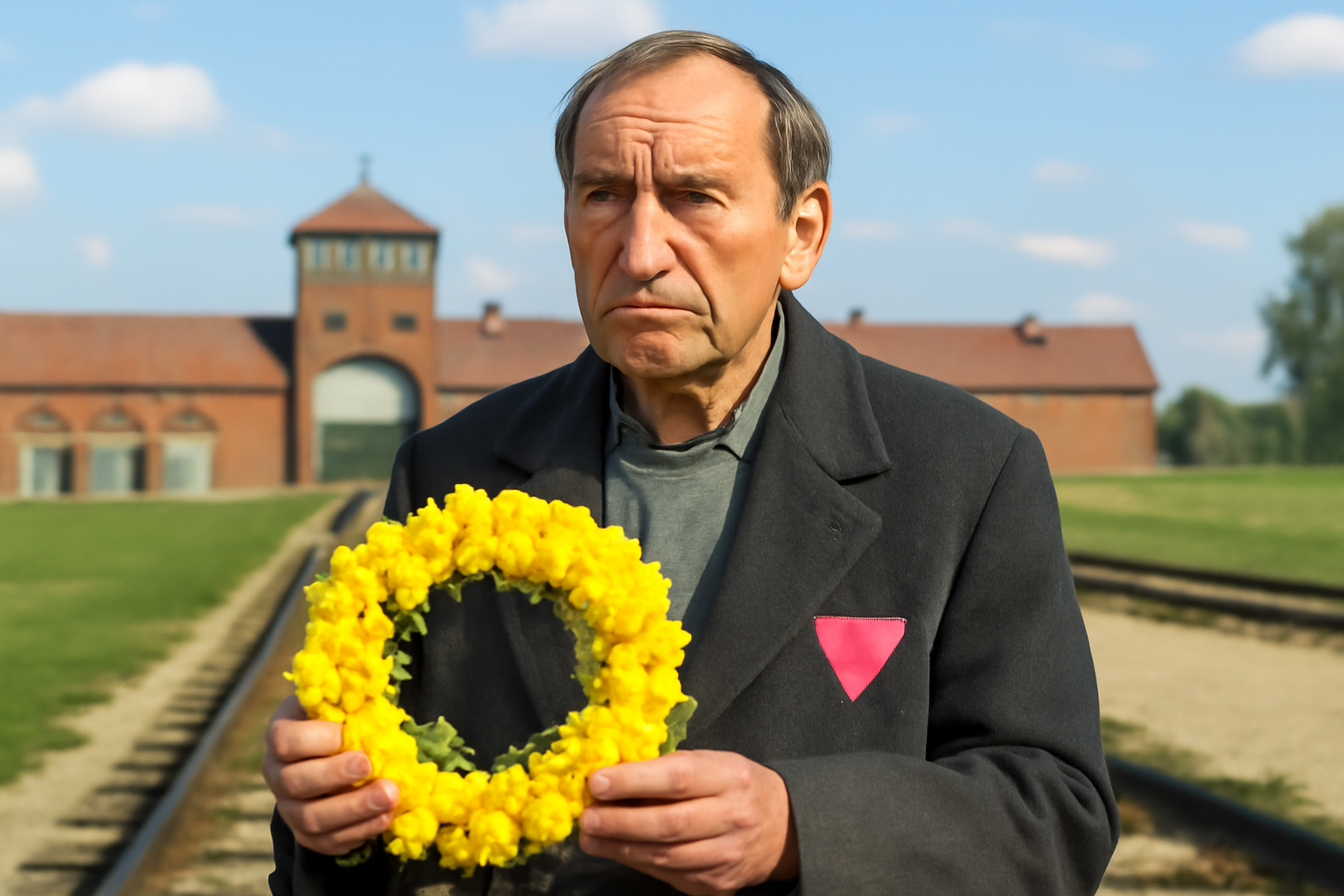
As we approach Holocaust Memorial Day 2025, marking 80 years since the liberation of Auschwitz, it is crucial to remember all the victims of the Holocaust, including those from the LGBTQ+ community who suffered under the Nazi regime.
On January 27, 1945, Soviet soldiers found Auschwitz, the largest of the Nazi extermination camps, eerily silent. The German forces had abandoned it, leaving behind thousands of emaciated prisoners. One of the first Red Army soldiers to arrive, Georgii Elisavetskii, recalled how prisoners rushed to them, overwhelmed with relief, after enduring five years of unimaginable horror.
Holocaust Memorial Day is observed each year to honor the memory of those who perished and those who survived, forever marked by the trauma they endured. The Nazi regime was responsible for the deaths of up to 17 million people, including six million Jews. Among the targeted minority groups were LGBTQ+ individuals, who suffered greatly under Hitler's rule.
Between 1933 and 1945, around 100,000 men were arrested in Nazi Germany for being homosexual. Of these, approximately 50,000 were convicted, and an estimated 5,000 to 15,000 were sent to concentration camps.
The Pink Triangle: A Symbol of Persecution
Prisoners in concentration camps were often categorized with distinct symbols. Gay men were forced to wear an upside-down pink triangle, marking them as "sexually deviant." This symbol lumped them with other accused criminals, such as rapists, and subjected them to extreme brutality.
Sociologist Rüdiger Lautmann estimated that up to 60% of the gay men imprisoned in concentration camps perished. These numbers, however, only reflect those openly identified as homosexual. Many more LGBTQ+ individuals concealed their identities to survive.
Unfortunately, solidarity among prisoners was rare, especially for those wearing the pink triangle, who were considered the lowest caste within the camps. The Nazis subjected them to horrific treatment, including torture and forced medical experiments.
Transgender individuals were similarly mistreated, often classified under the same category as homosexuals. They, too, faced severe persecution. In 1933, trans people became targets when authorities in Hamburg directed police to round up and intern "transvestites" in concentration camps.
Post-War Injustices
The end of World War II did not mean immediate freedom for LGBTQ+ prisoners. Many who survived the camps were transferred to prisons, as homosexuality remained illegal in both East and West Germany until the late 1960s. Consequently, the stories of queer survivors have been largely lost to history.
Pierre Seel, a concentration camp survivor, documented his harrowing experience in his memoir, "I, Pierre Seel, Deported Homosexual: A Memoir of Nazi Terror." He recounted the trauma of witnessing his young lover's brutal death by SS guards. Seel's account stands as one of the few first-person narratives from LGBTQ+ survivors.
The Legacy of the Pink Triangle
Though the pink triangle was initially a badge of shame, it has been reclaimed as a powerful symbol of resilience and remembrance. In the 1970s, at the dawn of the modern gay liberation movement, activists adopted the pink triangle to signify their struggle and identity.
In 1972, "The Men with the Pink Triangle" was published, providing a rare glimpse into the persecution of gay men during the Holocaust. The following year, Germany's first gay rights organization, Homosexuelle Aktion Westberlin, embraced the pink triangle as a symbol of liberation.
The triangle reappeared in the 1980s, during the AIDS crisis, in the iconic "Silence = Death" poster. It remains a potent reminder of past atrocities and the ongoing fight against hate and discrimination.
Today, as hate crimes against LGBTQ+ individuals and other minority groups continue to rise globally, remembering the lessons of the Holocaust is more critical than ever. The stories of those who suffered and died must not be forgotten, and the symbols of their persecution, like the pink triangle, serve as enduring reminders of the need for vigilance and solidarity in the face of hate.
Related Posts
Triumphant Trans Woman Wins Legal Battle and Inspires Others to Stand Up for Their Rights
Breaking new ground: a landmark victory in transgender rights After battling in courtrooms and enduring endless challenges, Diana Portillo, a transgender woman, has secured a monumental victory in her decade-long fight against workplace discrimination. The result? Nearly $1 million awarded in a historic settlement. But this isn't just a win on paper—it represents a powerful precedent in combati [...]
Pride Month in Latin America: Protests and Demands for Equality
**Celebrating Pride and advocating LGBTQ+ rights in Latin America** Pride Month in Latin America was a lively mix where celebration met activism. Communities united, not just throwing a party but making a stand—demanding equality and pushing governments toward better protection and rights recognition. Throughout Latin America, pride events erupted in marches and cultural displays, each with a c [...]
Transgender Erasure Actions Implemented by National Park Service
```html Trump administration's impact on national park service and transgender recognition The Trump administration made notable moves in undermining transgender representation, which included directing agencies like National Park Service not include "T" and "Q" when they refered “LGBTQ” in any official communication. This move seems part a broader plan by this administration aimed at reducin [...]